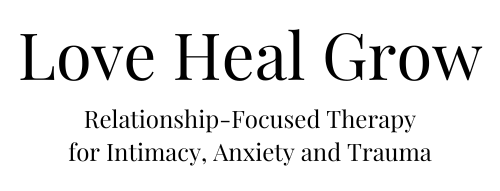
You can’t have a relationship without trust. It doesn’t matter what kind of relationship– romantic, platonic, familial– trust is always going to be the bedrock of intimacy, vulnerability, and close connections. While you might be able to have a cordial, surface-level relationship with someone you don’t trust completely, like a gossipy coworker, you need to know that the people you really care about can be trusted.
But how do you actively build trust in a relationship? It’s not like we’re taught how to do it, or how to practice maintaining trust. We know that we want to trust others, but it’s not something that’s always the easiest to express.
Fortunately, trust is something that people do think about and work on, and today, we’re going to talk about how to build trust in a relationship and give you the tools you need to think about trust and work on developing it for yourself.
Understanding Trust
Dr. Brené Brown, a researcher and author who studies trust and empathy, identifies seven elements of trust in her work. These elements are summed up in the acronym BRAVING. They offer a framework for understanding and cultivating trust:
- Boundaries: Respecting each other’s boundaries and being clear about your own.
- Reliability: Doing what you say you’ll do, consistently. You need to be there for people. You don’t have to overextend yourself, but you do need to keep your promises.
- Accountability: Owning your mistakes and making amends. It’s ok to make mistakes– what really matters is what you do afterwards.
- Vault: Keeping peoples’ confidence and not sharing information that isn’t yours to share.
- Integrity: Choosing courage over comfort, practicing your values rather than simply professing them.
- Non-judgment: Being able to ask for what you need and talk about how you feel without fear of judgment. A trusting relationship is open and honest.
- Generosity: Extending the most generous interpretation to the intentions, words, and actions of others.
Steps to Build Trust
So how do you build trust in a relationship? Let’s take a look at how you can better become attuned to the other person’s emotions and work within the BRAVING framework to develop trust.
Communicate Openly and Honestly
Open and honest communication is the cornerstone of trust. This means sharing your thoughts and feelings, being transparent about your needs, and listening actively to the other person. Avoiding deception and withholding information can erode trust, while honesty fosters a sense of security and mutual respect.
Respect Boundaries
Respecting boundaries involves understanding and honoring the limits that the other person sets. This includes physical boundaries, emotional boundaries, and personal space. By respecting these boundaries, you show the other person that you value their autonomy and well-being.
Be Reliable and Consistent
Reliability and consistency are key to building trust. This involves keeping promises, meeting deadlines, and following through on commitments. When you are dependable, the other person knows they can count on you, which strengthens the bond of trust.
Practice Accountability
Accountability means taking responsibility for your actions and their impact on others. If you make a mistake, acknowledge it, apologize sincerely, and take steps to make amends. This demonstrates humility and a willingness to learn and grow, which are essential for trust.
Maintain Confidentiality
Keeping confidence is crucial for trust. When the other person shares something in confidence, it is essential to respect their privacy and not share that information with others. This creates a safe space for open and honest communication.
Show Integrity
Integrity involves aligning your actions with your values. This means being honest, ethical, and fair in your interactions. When you act with integrity, you demonstrate that you are trustworthy and dependable.
Offer Non-Judgmental Support
Offering non-judgmental support means creating an environment where the other person feels safe to express themselves without fear of criticism or rejection. This involves listening empathetically, validating their feelings, and offering support without judgment.
Extend Generous Interpretations
Extending generous interpretations means giving the other person the benefit of the doubt and assuming positive intent in their actions and words. Instead of jumping to negative conclusions, consider alternative explanations that are kind and understanding. This approach helps create a sense of safety and reduces unnecessary conflict, promoting a deeper level of trust in the relationship. For example, if your partner is late to an event, instead of assuming they don’t care, consider that they might have been stuck in traffic or had an unforeseen delay. This mindset helps maintain trust and strengthens the bond between you.
The Deeper Meaning of Trust
Trust is about feeling that the other person is there for you and that they have your best interests at heart. It’s about knowing that your partner, your friend, or your family member will act in ways that promote your welfare, even when you are not present. This deeper sense of trust is built over time through small, everyday actions that demonstrate care and commitment.
When we look at the work of John and Julie Gottman, world-renowned couples’ therapists, they note that trust is built in what they call sliding door moments– the little moments of everyday life, not with grand gestures. In every interaction, you have a choice. Do you turn away from your partner, or do you turn towards their needs? One missed opportunity to connect won’t destroy trust, but if these missed moments become the norm, the relationship suffers.
Building Everyday Trust
Small gestures are important for building trust. But it can be hard to think of these small moments until after they’ve passed. To build trust in your everyday interactions, try looking for quiet, ordinary places to take the following steps:
Make Small Moments Count
Trust is built in the small moments of everyday life. This includes being present, showing interest in the other person’s day and other little details, and expressing appreciation and gratitude.
Prioritize Your Relationship
Make your relationship a priority by spending quality time together, showing affection, and maintaining a strong emotional connection.
Show Empathy
Practice empathy by trying to understand the other person’s perspective and feelings. This helps to build emotional intimacy and trust.
Communicate Effectively
Use effective communication skills, such as active listening, reflecting back what you’ve heard, and expressing your needs clearly and respectfully.
Rebuilding Trust After It Has Been Broken
Rebuilding trust after it has been broken can be challenging, but it is possible with effort and commitment. The first step in rebuilding trust is acknowledging that it has been broken. This involves being honest about what happened and taking responsibility for your actions. A sincere apology is essential for rebuilding trust. This means expressing genuine remorse, taking responsibility for your actions, and making amends.
To rebuild trust, you must commit to changing the behaviors that led to the breach. This involves being transparent, consistent, and accountable. It’s also important to remember that rebuilding trust takes time. Be patient and allow the other person the time they need to heal and regain trust in you.
Building and maintaining trust in relationships requires ongoing effort and commitment. Remember that trust is built in the small moments of everyday life and that rebuilding trust after it has been broken takes time and effort. By prioritizing trust, you can create strong, healthy, and fulfilling relationships. If you and your partner want to work on developing trust, don’t hesitate to reach out and schedule an appointment with one of the Love Heal Grow team. Our relationship therapists and coaches are here for you!
























